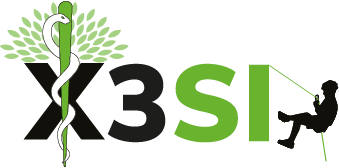Notes and revision resources for Module 10A – Trauma & Injury.
This module includes information on shock, bleeding, fractures and sprains, head injuries, dental incidents, burns and animal bites and stings.
How to call emergency services
Have a bystander help you, or call on hands-free if you are alone.
- Which service/s you require
- Your name and contact number
- Your location (consider what 3 words if uncertain or unable to describe
- What happened (Mechanism of injury, illness, environmental factors
- How long ago it happened
- Patient condition and help needed
- What’s being done to help the patient.
In some countries, the dispatcher will be able to provide care instructions over the phone.
Documentation
- Report near misses and incidents to DC per POR
- Centralised incident database
- Patient care report / soap note
Basic Premise of Life Support
- We need the gasses (air) to come in and out
- We need the blood to go round and round
- We need the brain to send the signals that make these things happen
Anything which stands in the way of this is an immediate life threat.
Secondary Assessment
- Vital Signs (particularly mental status)
- Physical Exam
- SAMPLE History
Physical exam
- Detailed physical exam on unresponsive patients or patients with a significant mechanism of injiry
- Focused physical exam on responsive, reliable patients without significant mechanism of injury
Shock
Shock is a life-threatening condition that occurs when the circulatory system fails to generate adequate pressure in the circulating blood volume to oxygenate all the cells. There are 4 main types of shock, but we are going to concern ourself with volume shock. The other types we identify and treat the cause (ie anaphylaxis, sepsis, heart attack etc).
Causes Include:
- Any form of fluid loss or migration such as: sweating, diarrhea, vomiting
- Internal or external major bleeding
Signs & Symptoms include:
- Pale, cool, clammy skin
- Weakness, dizziness, light-headedness
- Nausea or vomiting
- Rapid, weak pulse
- Anxiety or irrational behaviour
- Rapid shallow breathing
- Reducing level of consciousness
Treatment:
- Stop the fluid loss
- Replace fluids if possible
- Urgent evac
- Life support as required
Bleeding
Arterial bleeds are life threatening and a primary assessment issue. Arterial bleeds can be identifies with spurting everytime the heart beats, or bright, red blood.
Treatment:
- Well aimed direct pressure
- Consider haemostatic dressing or tourniquet
- Clean (away from the wound) with 1% PI or water clean enough to drink
- Remember PPE
Other bleeding will be a darker red, and not spurt.
Treatment:
- Well aimed direct pressure
- Clean (away from the wound) with 1% PI or water clean enough to drink
- Remember PPE
Burns
- Classified as superficial, partial thickness or full thickness
- Use the rule of 9s to estimate body surface area effected
- Patients palm equals 1% body surface area
- Burns an create susceptibility to infection, hypothermia and dehydration
Thermal burns treatment:
- Remove heat source
- Immediate cooling with cold running water
- Do not remove clothing that has burnt into the skin or burst blisters
Chemical burns treatment:
- Protect self and others first
- Brush dry powder off where possible
- Wash under running water for at least 20 minutes
Seek urgent medical attention if:
- The patient is a child
- The burn is deep
- The burn affects face, hands, feet or genitals
- Burns that go all the way around a limb
- Burns that are more than 1% body surface area
Fractures, Sprains & Strains
- Obvious fractures will include deformity or open wounds
- Other injuries may or may not be a fracture, and the only way of knowing is an xray
- If in doubt, send for xray
- For stable wounds treat with Rest, Ice, Compression, Eleveation
- For unstable wounds, treat with immobilisation (splint) and evacuation
- Splings should be complete, compact and comfortable
Head Injuries
- Heads can bleed a lot, but not usually to the point of shock or life threat
- A head injury is just that, but for significant MOI we need to consider spint
- Skull fracture signs may include battle signs, racoon eyes, positive HALO test or CSF from facial orifices
Traumatic Brain Injuries
- Any loss of consciousness, altered mental status or loss of memory should be treated as a traumatic brain injury and evacuated towards professional medical assessment
Increased Intracranial Pressure
- Persistent vomiting is a red flag that requires urgent surgical intervention
Bites & Stings
- Risk assess the environment and activity to understand what natural injected toxin hazards exist and their probability and consequence
- Research with local authorities to identify authoritative treatment recommendations and facilities that have appropriate antivenin
- Toxins can generally be classified as neurotoxic or tissu toxic
- With neurotoxins, be prepared to deal with breathing problems, shock and provide life support as required
A quick reminder, in order to fully validate module 10A, there are 4 steps:
- Module 10A Part 1 – Life Support (Video Call)
- Module 10A Part 2 – Trauma & Injury (Video Call)
- Module 10A Part 3 – Major Illness (Video Call)
- Module 10B – Practical Skills Session
If you ever have any questions about first aid, or if you have an incident and want to debrief, I’m happy to jump on a call with you. You can reach me via my BSO email address, or on WhatsApp on +60 12 555 8350. Do remember I’m in GMT+8 so am unlikely to be online during the evenings GMT/CET.
